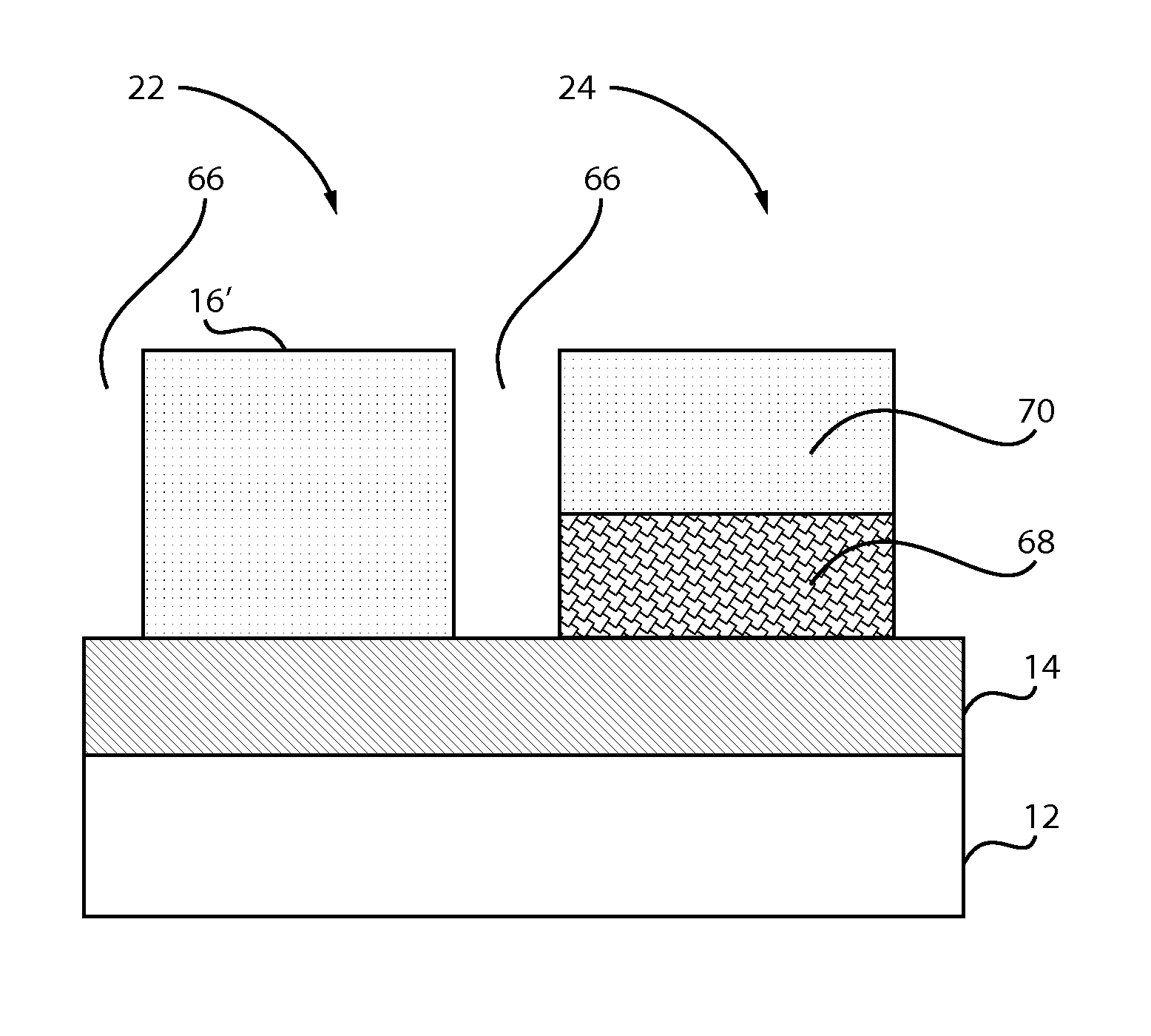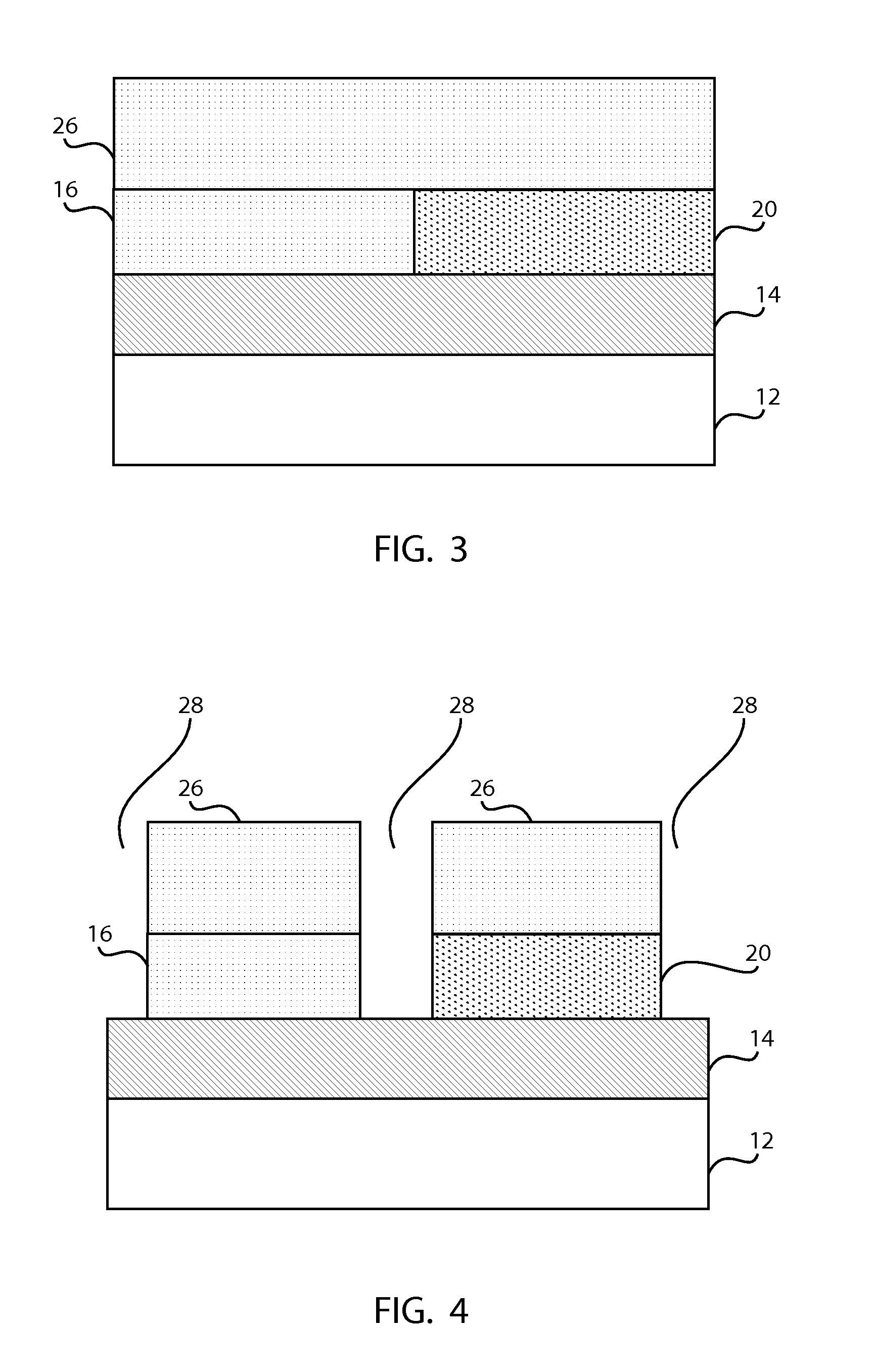Porous silicon relaxation medium for dislocation free CMOS devices
a relaxation medium and porous silicon technology, applied in the field of semiconductor processing, can solve the problems of forming a dually strained channel (tensile for nfet and compressive for pfet), and achieve the effect of reducing the number of strained channels
- Summary
- Abstract
- Description
- Claims
- Application Information
AI Technical Summary
Benefits of technology
Problems solved by technology
Method used
Image
Examples
Embodiment Construction
[0027]In accordance with the present principles, methods and structures are provided for forming tensile strained NFETs and compressive strained PFETs on a same chip. Both NFETs and PFETs have a dielectric layer formed under a channel to provide improved isolation that is better than junction isolation. In accordance with useful embodiments, a tensily strained silicon-on-insulator (sSOI) has a hard mask formed thereon to cover an NFET region while a PFET region is exposed. In one embodiment, boron is doped in the sSOI in the PFET region followed by epitaxially growing undoped Si on top of the boron-doped sSOI. NFET and PFET active regions are then patterned. The boron-doped sSOI is converted into porous Si so that the epitaxy Si relaxes. The porous Si is converted into an oxide to serve as an anchor for the relaxed Si. Then, SiGe is epitaxially grown on top of the relaxed Si to form compressively strained SiGe for the PFET. In this way, both tensile and compressive regions (for NFET...
PUM
| Property | Measurement | Unit |
|---|---|---|
| porosity | aaaaa | aaaaa |
| porosity | aaaaa | aaaaa |
| tensile-strained | aaaaa | aaaaa |
Abstract
Description
Claims
Application Information
 Login to View More
Login to View More - R&D
- Intellectual Property
- Life Sciences
- Materials
- Tech Scout
- Unparalleled Data Quality
- Higher Quality Content
- 60% Fewer Hallucinations
Browse by: Latest US Patents, China's latest patents, Technical Efficacy Thesaurus, Application Domain, Technology Topic, Popular Technical Reports.
© 2025 PatSnap. All rights reserved.Legal|Privacy policy|Modern Slavery Act Transparency Statement|Sitemap|About US| Contact US: help@patsnap.com



